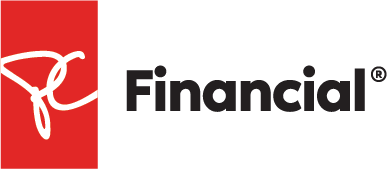5 habits that have allowed me to continue saving as a new immigrant to Canada

My family and I landed as Canadian Residents two years ago and, like many others new to Canada, our savings were earned in a currency of lesser value to Canadian dollars. My husband and I knew that after conversion and with the higher cost of living here in Canada, we should put money savings practices into place to maintain our financial stability. Here are the 5 money saving practices that have allowed us to continue saving as new immigrants to Canada, some of which have immigrated with us, some we developed slowly through practice.
1. Create a Monthly Budget
Having a clear outline of how funds are to be allocated gives me a concrete idea of how to plan the month for my family. I try to calculate what I need at the supermarket this month, how many times we would like to eat out, and how many activities I would like to schedule for the kids on the weekends. This type of forecasting allows me to weave less expensive or free activities into the family’s monthly program beforehand.
2. Track Your Spending
Tracking our spending has been as important as creating a budget. I usually revisit and revise my budget on a monthly basis. With this information fresh in my mind while shopping my aim is to spend according to budget. However, to ensure I do so I retain all bills and allocate time every weekend to input them into a very simple spreadsheet. This takes out the guesswork and ensures I stay on track.
3. Balance a Luxury Splurge by Saving on Everyday Items
Eating out a couple times a month along with visiting new children’s attractions around the city are non-negotiable in my household. However, we still enjoy these luxuries while saving money. We do so by saving on everyday items, and the items we purchase every week that can really add up without us even noticing. The PC Financial® Mastercard® (opens in a new window) allows us to earn 10 PC Optimum™ points per dollar spent anywhere, including on everyday items purchased at Loblaws grocery stores, gas at Esso™ and Mobil™ stations and on purchases at Shoppers Drug Mart. These points can then be redeemed at any store participating in the PC Optimum program. With a combination of points earned and no annual fees, use of the PC Financial Mastercard™ makes sense for my budget.
4. Get Honest About Wants vs. Needs
Having said that some luxuries are non-negotiable for us, and they can be for you too, it is important for me to evaluate my family’s wants vs needs, and to accurately categorize wants as luxuries and budget for them accordingly. To do this, I ask myself if this item would still be a need if a worst-case scenario became true, or is it simply a want? This type of comparison allows me to differentiate wants from needs more easily. In my case that worst-case scenario is not being able to afford the therapy my son requires as a special needs child. I ask myself, if I had to choose between our current needs and this scenario would I still consider it a need? If the answer is no then I know this is a want and not a need.
5. Review Your Bills
Lastly, I am constantly reviewing the charges made to my payment cards. These small but recurring charges, like idle subscription apps on the family phones (yes my daughter has a phone now also), can add up significantly over time. By staying on top of my bills I ensure that we only pay for what we consume.
General information not about PC Financial products is provided for your reference and interest only. The above content is intended only to provide a summary and general overview on matters of interest and is not a substitute for, and should not be construed as the advice of an experienced professional. The PC Financial® team does not guarantee the currency, accuracy, applicability or completeness of this content.


